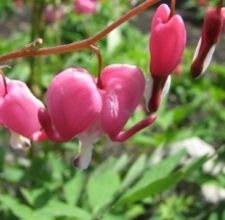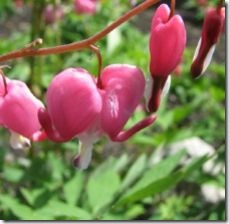The bleeding heart–Dicentra spectabilis–is a fern-like plant that blooms with delicate heart-shaped flowers in early summer. It is a surprisingly hardy perennial that can thrive in USDA zones 2 to 9. While the bleeding heart will look beautiful in the spring and early summer, it will die back before August. If you plan to plant a bleeding heart in your garden, you may want to add other plants to fill in after the bleeding heart’s blooming season ends.
- Difficulty:
- Easy
Instructions
- Find an area of your garden that is shady. The area beneath a large tree or a part shaded by your home works best. The bleeding heart plant cannot tolerate more than a few hours of sunlight per day. They are shade-loving plants and will do best with no direct sunlight, especially white bleeding hearts.
- Look at your garden from the front. The area that will be the back is the best placement for these plants. The average height of a bleeding heart plant is 2 to 3 feet. They make a spring backdrop for summer-blooming flowers that do not bloom until later in the season. Plant bleeding hearts about 12 inches apart.
- Plant perennials such as begonias or hostas in front of the bleeding hearts. Leave another 12 inches between the bleeding hearts and the hostas or begonias. The bold leaves of these plants will complement the fern-like foliage of the bleeding heart. The hostas will also fill in over the bleeding hearts after they die back in early summer. Begonias and hostas will also be highly tolerant of the shady conditions of the garden.
- Place a small row of annuals at the front of the garden. Pick annuals that will thrive in shady conditions. Planting annuals rather than perennials in the front will allow you to change a bit of the garden each year. Impatiens are an excellent choice for a shade garden. They spread nicely and add vibrant color in mid to late summer. Or choose pansies, bachelor buttons or a combination of a few shade loving annuals.
Tips & Warnings
-
Once the bleeding heart plant dies back, cut the stalks back to allow room for the other plants to flourish.
-
Do not attempt to use bleeding hearts for borders alone. Their foliage is present for a very short period of the average growing season. The spot will look bare after June.


Deprecated: strpos(): Passing null to parameter #1 ($haystack) of type string is deprecated in /home/agriviek8Qv/agriviet.net/public_html/wp-includes/comment-template.php on line 2522